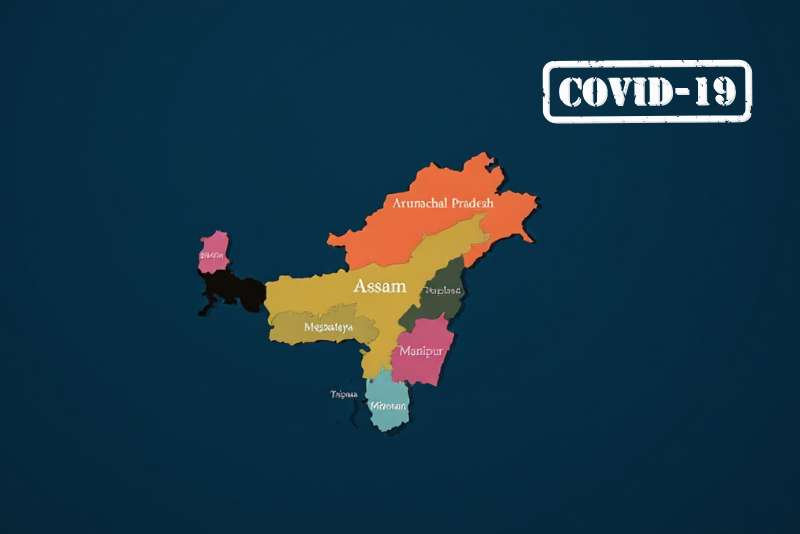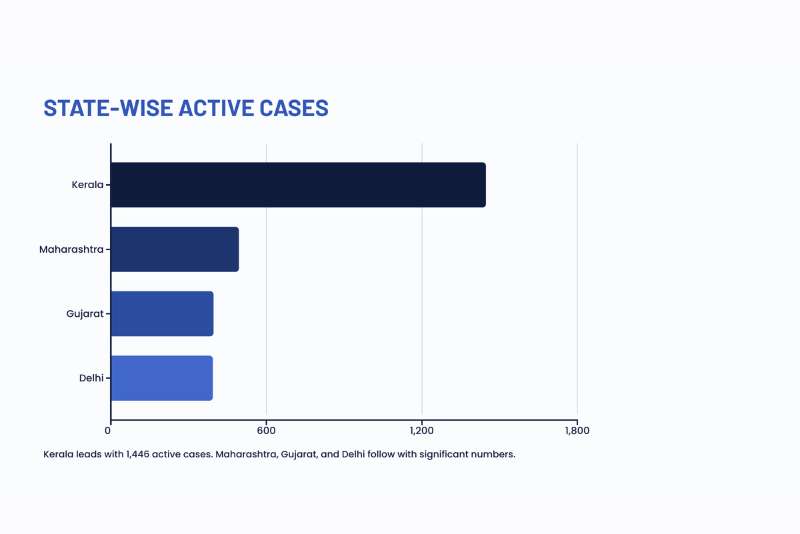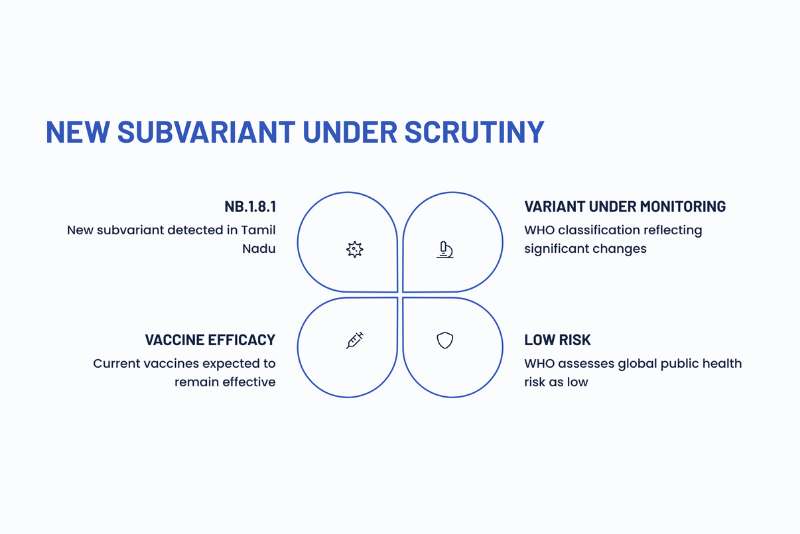
India | June 4, 2025 — A renewed wave of Covid-19 infections is sweeping across India, with the northeastern states reporting 12 new cases, signaling a growing public health challenge. This development coincides with a national spike, raising questions about the virus’s persistence and the effectiveness of current preventive measures.
Northeast Sees Fresh Infections
The Ministry of Health and Family Welfare confirmed the 12 new cases in the Northeast, distributed as follows:
- Assam: 6 cases
- Sikkim: 4 cases
- Mizoram: 2 cases
This follows a report from Arunachal Pradesh, where three individuals, including a pregnant woman, recently tested negative after earlier positive results. The emergence of new cases in the region has prompted local health authorities to intensify surveillance and testing efforts.
“While the numbers are small, we are closely monitoring the situation to prevent any rapid spread,” said a senior official from Assam’s Health Department. “Public cooperation with testing and hygiene protocols is critical.”
National Case Load Climbs

Nationally, India reported 4,026 active Covid-19 cases as of June 3, with 65 new infections and five deaths recorded in the past 24 hours. The fatalities were reported from:
- Kerala: 1 death
- Maharashtra: 2 deaths
- Tamil Nadu: 1 death
- West Bengal: 1 death
Kerala leads with 1,446 active cases, followed by Maharashtra (494), Gujarat (397), and Delhi (393). Most patients are experiencing mild symptoms and recovering at home, according to the Health Ministry. However, the recent deaths underscore the ongoing risk, particularly for vulnerable populations.
Dr. Rajiv Behl, Director General of the Indian Council of Medical Research (ICMR), noted, “Genome sequencing from samples in West and South India indicates that the current variants are Omicron sub-lineages, which are not associated with severe outcomes.”
New Subvariant Under Scrutiny

A new Covid-19 subvariant, NB.1.8.1, has been detected in Tamil Nadu and classified by the World Health Organization (WHO) as a “Variant Under Monitoring.” This designation reflects significant changes in the virus’s characteristics, though its epidemiological impact remains unclear. The sample was submitted to the Indian SARS-CoV-2 Genomics Consortium (INSACOG) for further analysis in April 2025.
INSACOG data also indicates that JN.1 remains the dominant variant in India, accounting for 53% of sequenced samples, followed by BA.2 at 26%. The NB.1.8.1 subvariant carries mutations in its spike protein, potentially increasing transmissibility and immune evasion, but WHO assesses its global public health risk as low.
“Current vaccines are expected to remain effective against NB.1.8.1 for preventing severe disease,” WHO stated in a recent summary.
Why the Surge?
Health experts attribute the rise in cases to multiple factors. Waning immunity from prior infections and vaccinations is a primary concern, particularly among the elderly and immunocompromised. Uneven booster coverage and increased detection through improved surveillance also play a role.
Dr. Arup Halder, a pulmonologist at CMRI Hospital, Kolkata, explained, “Most cases are mild due to existing immunity, but we must remain vigilant, especially for high-risk groups. Boosters and precautions like masking in crowded areas are advisable.”
The surge is not unique to India. Neighboring countries like Singapore and Hong Kong have reported similar increases, driven by subvariants like NB.1.8.1 and LF.7, which were also detected in Gujarat in May 2025.
Government Response and Public Advisory
The Union Health Ministry has urged states to enhance testing and genome sequencing to track the spread of new variants. Delhi has issued advisories to hospitals to ensure adequate supplies of beds, oxygen, and vaccines.
Public health officials emphasize the importance of preventive measures. “We have a robust surveillance system through the Integrated Disease Surveillance Programme and ICMR’s respiratory virus network,” a Health Ministry source said. “Most cases are managed at home, but we urge people to stay cautious.”
Authorities recommend:
- Wearing masks in crowded or enclosed spaces
- Maintaining hand hygiene
- Seeking timely testing for flu-like symptoms
- Updating vaccinations, especially for seniors and those with comorbidities
Looking Ahead
While the current wave is less severe than past outbreaks, the emergence of new subvariants and rising cases signal the need for sustained vigilance. India’s health infrastructure, bolstered by previous pandemic experiences, is prepared to respond, but public adherence to guidelines will be key to curbing the spread.
As the situation evolves, health officials are focused on balancing proactive measures with avoiding undue panic. “The virus is still with us, but we are better equipped to handle it,” said Dr. Meenu Singh, Director of AIIMS Rishikesh. “Caution, not fear, is the way forward.”
For the latest updates, visit the Ministry of Health and Family Welfare’s official website or follow local health department advisories.
















































